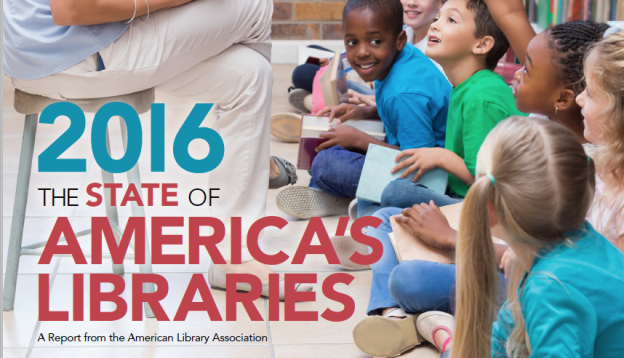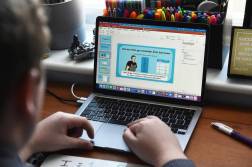School libraries are transforming into digital hubs – report

Libraries are no longer associated with quiet reading rooms.
The American Library Association, an advocacy and professional group, released a report on the State of America’s Libraries that highlights a trend also reflected in classrooms across the country: more content is going digital.
The report, which covers libraries that serve K-12 schools, higher education institutions and communities, found that more librarians are retaining digital content for teachers and students alike. Last year, nearly 70 percent of librarians surveyed said they acquired digital content, doubling from 35 percent in 2010. The number of librarians who implemented game-based environments also doubled during those years, to 35 percent from 16 percent.
“Among other things, administrators are looking to school librarians to help them digitize education and lead blended learning activities in schools, thus bringing equity, connectivity and personalization to instruction,” the report’s authors wrote.
However, as librarians introduce digital content – promoting blended learning and digital equity in the process – they are also confronting new challenges. About 35 percent of librarians complained about having insufficient access to the internet, an increase from 19 percent in 2010. Librarians also have difficulty finding age-appropriate digital content, helping teachers learn how to use digital materials, and ensuring that students have access to technology in school.
Librarians frequently serve as “media mentors,” helping kids get adjusted to using devices. About two-thirds of children ages 2 to 10 have access to e-readers or tablets, according to the report.
In higher education, nearly 90 percent of institutions reported in 2013 that providing space for student collaboration is a top priority. Many university libraries provide equipment and software for media-enriched content. Yale University, University of Chicago and U.S. Military Academy are among the top technology-enhanced libraries in academia.
For public libraries, traditional summer reading programs have been combined with a broader range of STEM and digital learning activities. The community hubs also play an important role by providing technology and experts to help kids build digital literacy skills.
ALA released the report in conjunction with National Library Week, which entails a series of events recognizing library employees during the month. This year, the seven-day event starting April 10 features a public awareness campaign launched by ALA in 2015, called “Libraries Transform.”
The campaign tries to remind people that libraries are not simply quiet places to read, but also community centers where people can collaborate using technologies like 3D printers. ALA encourages libraries to share how they serve their communities on social media during the week-long event.
Reach the reporter at yizhu.wang@edscoop.com and follow her on Twitter @yizhuevy and @edscoop_news.




